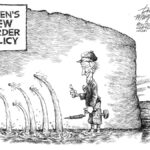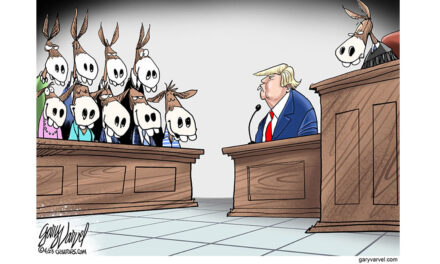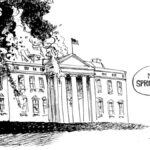
North Korea: A Forgotten Threat?
North Korea’s nuclear potential is the biggest threat facing the Asia Pacific region today. While the country may have agreed to abandon all nuclear research 10 years ago, its recent missile tests show that it is no longer interested in denuclearization.
We now face unsteady, untrustworthy leadership coupled with a habit of broken promises and the intent to develop weapons capable of reaching the United States – not to mention the dangers posed to our friends in South Korea. While the Obama Administration has remained focused on the Middle East, we must not forget about North Korea.
Kim Jong-un’s rogue regime isn’t just a threat for the Republic of Korea to figure out; nor does it affect only the US and China – what North Korea aims to do with a combination of intercontinental ballistic missiles and nuclear weapons could endanger the entire world.
We’ve all heard about the country’s recent missile tests, but what we haven’t heard much about is North Korea’s suspicious collaboration with Iran. The Obama Administration has denied that the two countries have engaged in nuclear weapons cooperation, but the issue remains obscure.
Newspapers in other countries have been reporting on Iran-North Korea collaboration since the late ‘90s. The partnership between Tehran and Pyongyang expanded with the signing of a technology agreement in 2012. In the ceremony that followed, the Ayatollah Khamenei announced that North Korea and Iran have “common enemies” and must establish an “anti-hegemonic front.” A second, clandestine agreement promised to deepen teamwork on “strategic projects.”
The intent of the 2016 tests is to create an intercontinental ballistic missile with a nuclear warhead that could reach the US. According to the Washington Times, “success appears possible by 2018.”
But the real question is how the international community can work together to stop North Korea from these dangerous pursuits. Our allies in South Korea took an important step when they decided to close the Kaesong Industrial Complex, an industrial park that has been a source of much-needed cash for North Korea.
The White House took an important step with the signing of the North Korea Sanctions and Policy Enhancement Act in mid-February. This document aims to quell North Korea’s pursuit of dangerous weapons as well as its censorship activities, human rights abuses, and malicious cyberwarfare.
The document also represents a huge shift in our policy regarding North Korea. “Our foreign policy must be focused on the threat from ISIL and al Qaeda, but it can’t stop there,” said Obama in his final State of the Union address.
Still, North Korea’s recent missile tests (made possible with the help of Iranian experts) are a metaphorical “middle finger” to the rest of the world. Perhaps they will change their tune if (when) we begin to arm South Korea with our very best anti-missile systems.
At the same time, we must leave the door open for negotiations while not appearing desperate to talk. On top of that, North Korea is not an easy country with which to negotiate.
To date, North Korea has conducted four nuclear tests (three during the past seven years). While some experts continue to claim that North Korea is doing nothing more than “crying wolf,” March’s ICBM test showed range sufficient to reach the United States. Meanwhile, experts confirm the country has at least 20 nuclear warheads and could attain up to 100 more by 2021.
The United States is a big target. We cannot afford to wait until North Korea proves it has the ability to send a nuclear weapon our way. By then, it will be too late.

























NYC is about to fall. Being tun by Muslims and the College kids with no comments from the White House,…
The answer is Trump cannot get a fair trial anywhere he loses. But the real question is probably better stated…
The short answer, no. the long answer, Trump can't even get a fair judge!
merchan and bragg should both be in hillary bags where schitt eaters belong! Come after me for contempt ya Mother…
Oh, Bullshit. You MAGATS already starting with the 'rigging' and the 'cheating' crapola ! ALREADY they have put up with…